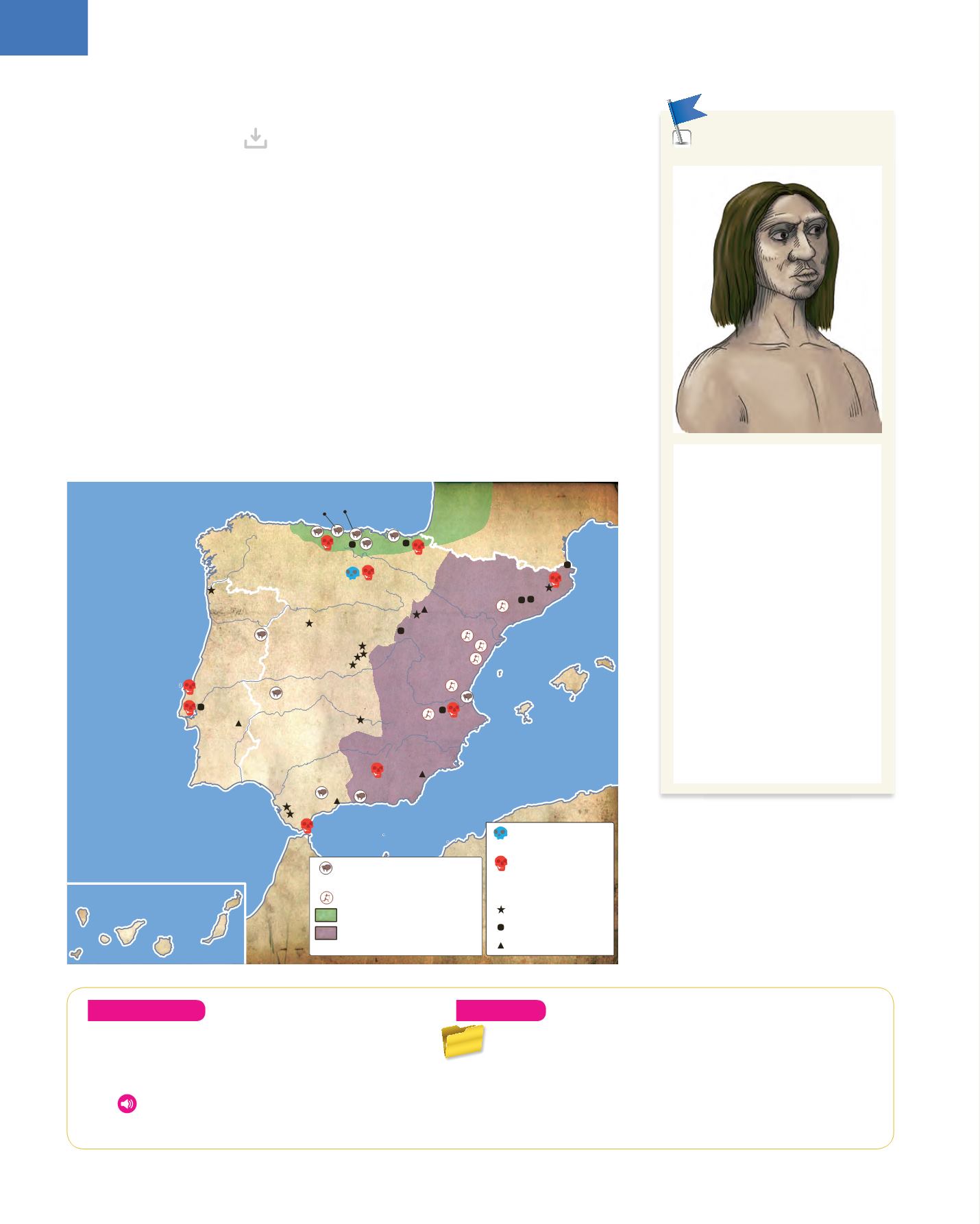
1
20
1. Prehistory: the Paleolithic Period
Upper Paleolithic cave
paintings and engravings
Levante cave painting
Franco-Cantabrian region
Area of Levante
cave paintings
Remains of
Homo antecessor
Remains of
Homo
neanderthalensis
Lower Paleolithic
Middle Paleolithic
Upper Paleolithic
Sites
Atapuerca
Altamira
Gibraltar
Furninha
Salemas
Carigüela
Negra cave
Banyoles
El Sidrón
Lezetxiki
Santimamiñe
Cogull
Calapata
Remigia cave
Valltorta
Côa
Alpera
Araña caves
Nerja
La Pileta
Maltravieso
El Pindal
Tito Bustillo
Parpalló
El Aculadero
La Janda
Pinedo
El Sotillo
San Isidro
Torralba
Alba
de Tormes
Viana do Castelo
Puig d’en Roca
El Castillo
Porzuna
Áridos
Agut
Romaní
Seriñyà
Morín
Los Casares
El Diablo
Evora Monte
Zájara
El Tesoro
AT L A N T I C
O C E A N
Mediterranean Sea
!
4. THE PALEOLITHIC PERIOD ON THE IBERIAN
PENINSULA
The most important
Lower Paleolithic
site on the Iberian Peninsula and in the world
is
Atapuerca (Burgos)
. Numerous remains of hominids, including the only known
remains of
Homo antecessor
, have been discovered there.
During the
Middle Paleolithic
, the peninsula was inhabited by Neanderthals.
Evidence of this has been found on the sites in
Gibraltar
and
El Sidrón (Asturias)
.
In the
Upper Paleolithic
,
Homo sapiens
produced the cave paintings in the
Franco-Cantabrian region. The most famous ones are in the caves of
El Castillo
and
Altamira
(both in Cantabria),
Tito Bustillo
(Asturias) and
Santimamiñe
(the Basque
Country).
During the
Epipaleolithic
, Levante cave painting developed along the Mediterranean
coast of the Iberian Peninsula. Examples include the paintings in
Cogull
(Lleida),
Valltorta
and
Remigia cave
(both in Castellón) and
Araña caves
(Valencia). This
style continued to be used during the following period (the Neolithic), sometimes in
the same caves.
Important
Homo antecessor
lived in
what is now the region of
Burgos 800000 years ago.
Their remains are among the
oldest in Europe. They were
stocky
9
and their brains were
around 1000 cm³.
Some of their features are
similar to
Homo erectus
.
However, others are more
developed andwould suggest
they are the ancestors of
Homo
neanderthalensis
.
Currently, experts are unable
to agree on where they
belong in the process of
hominisation.
Understand
29.
Think back to the illustrations showing the
process of hominisation. Where would you
place
Homo antecessor
?
30.
Look at the map above. Listen and say
true or false. Correct the false sentences.
9
stocky
:
strongly built
Analyse
31.
Look up the following information about the site at
Atapuerca.
❚
A general description of the archaeological site.
❚
The way of life of the hominids who lived there.
❚
How this site contributes to our understanding of Prehistory.


